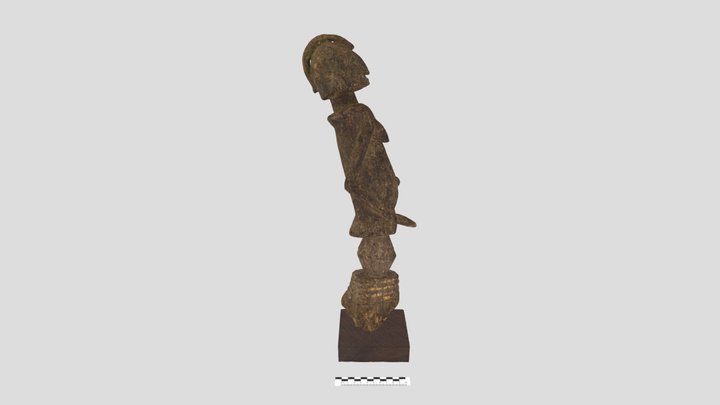
Figure - ancestor
między 1901 — 1950
National Museum in Szczecin
Part of the collection: Collection of Dogonian art
In Dogon art the most frequent motif are images of ancestors, real and mythical, male, female and hermaphrodite. The Dogon have a strongly developed cult of ancestors. There are two levels of ancestors: the old dead (eighty men and women descended from the eight descendants of the first couple, the creators of the order of things) and all the other dead (the guardians of traditions and rules established by the first eighty). We can often see features characteristic of both sexes in one figure. Such a solution has its justification in the Dogon mythology. Among the eight main ancestors born from the first pair of people formed by Amma, the four older ones were male and the four younger ones were female. They were endowed with a unique gift of nature; in addition to the characteristics of one sex, they possessed at the same time the properties of the other, thanks to which they were able to fertilize themselves. Ogotemmeli, the Dogon sage who shared his knowledge with Marcel Griaul, the French anthropologist, told about the Dogon ancestors in the following way: In those ancient times of world development, people did not know death. The eight ancestors born of the first pair of humans thus lived indefinitely. They gave birth to eight different lines, as each one reproduced independently - for they were all both male and female. According to the Dogon, the effects of this are still visible today, and every newborn child, despite having a clearly identifiable sex, also has traces of the opposite sex. The female element in boys is the foreskin, and the male element in girls is the clitoris. It is therefore necessary to circumcise boys and to perform an excision in the case of girls, because uncircumcised people who combine features of both sexes cannot be real men or real women.
Ewa Prądzyńska
Author / creator
Dimensions
cały obiekt: height: 36,5 cm, width: 7 cm
Object type
figure
Creation time / dating
Creation / finding place
Identification number
Location / status

między 1901 — 1950
National Museum in Szczecin

między 1951 — 2000
National Museum in Szczecin
około 1970
National Museum in Szczecin
DISCOVER this TOPIC
National Museum in Szczecin
DISCOVER this PATH
Educational path